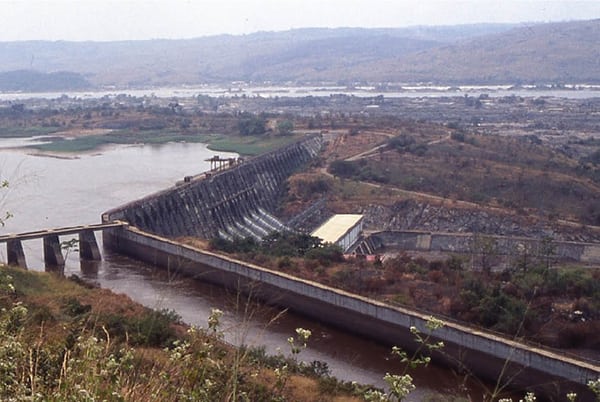Headway for Congo’s Long-Delayed 40-GW Inga Hydro Project
Plans to build the $12 billion Inga 3 hydropower project may be finally coming to fruition after a new energy treaty signed by South Africa and Democratic Republic of Congo (DRC) promised to give the long-stalled project a credible power purchaser.
The DRC has been seeking a development group for the 4.8-GW project proposed on the Congo River—the third largest river in the world by volume of water discharged—and bidders have apparently been forthcoming. So far bid groups for the projects include China Three Gorges Corp. and Sinohydro Corp; a consortium of South Korean companies POSCO and Daewoo Corp. and Canada’s SNC-Lavalin Group; and Spain’s Actividades de Construccion y Servicios SA and Eurofinsa Group. But the DRC is still open to other investors and has said it could make its decision in June or July next year.
That means construction of Inga 3, which would be the first of eight massive units comprising the ambitious 40-GW Grand Inga project, may begin in October 2015 and be completed by 2020. That $80 billion project would require 66 square miles around the Congo River to be flooded to create what could become the largest source of hydropower in the world.
Two existing dams—Inga 1 and Inga 2 (Figure 2)—have already been operating on the Congo River for more than three decades, but they are dilapidated and underperform at around 50% of capacity. Internationally backed efforts to refurbish those plants are underway, but even these more modest projects have been plagued by years of delay. By June 2013, three out of six turbines in Inga I had been rehabilitated and one had been replaced. The other two turbines were scheduled for completion by the end of 2013. Five of Inga 2’s eight turbines were working, and the other three are scheduled to be refurbished by the end of 2015.
While feasibility studies for the Inga 3 project have been carried out (financed by the African Development Bank), no power purchasers emerged until the DRC’s October treaty with South Africa, which guarantees 2,500 MW from the project for South Africa’s power-strapped state-owned utility Eskom. Under the treaty, the DRC will build nearly 1,841 kilometers (km) of transmission lines to its border with Zambia, and South Africa will install 1,540 km of lines from Zambia through Zimbabwe. The DRC has meanwhile said it will provide 1,300 MW from Inga 3 to the country’s lucrative but energy-short copper mining industries in Katanga province. The remainder is expected to power the DRC. Of the country’s population of 70 million, only 9% have electricity.
Observers still express reservations about the project’s completion, however, owing to the DRC’s political volatility. The country is emerging from a long period of conflict and mismanagement, though in 2011—for the first time in more than four decades—it was able to organize back-to-back multiparty presidential and parliamentary elections.
Then there are cost concerns: Estimates to refurbish the Inga 1 and Inga 2 projects alone were recently expanded from $226.7 million to $460.2 million. Meanwhile, the World Bank is reviewing an aid request from the DRC’s Ministry of Energy for $73 million of the Inga 3’s $12 billion total project cost. It optimistically says in affiliated documents that the hydropower potential of the 40-GW Inga project would make it the largest and “most cost-effective” hydroelectric site in the world. And though it notes that “heavy engagement” in the electricity sector through two regional energy projects yielded “limited results,” significant progress has been made in recent months on the institutional front, including strengthening governance within the DRC’s National Electricity Co.
—Sonal Patel, associate editor (@POWERmagazine, @sonalcpatel)
